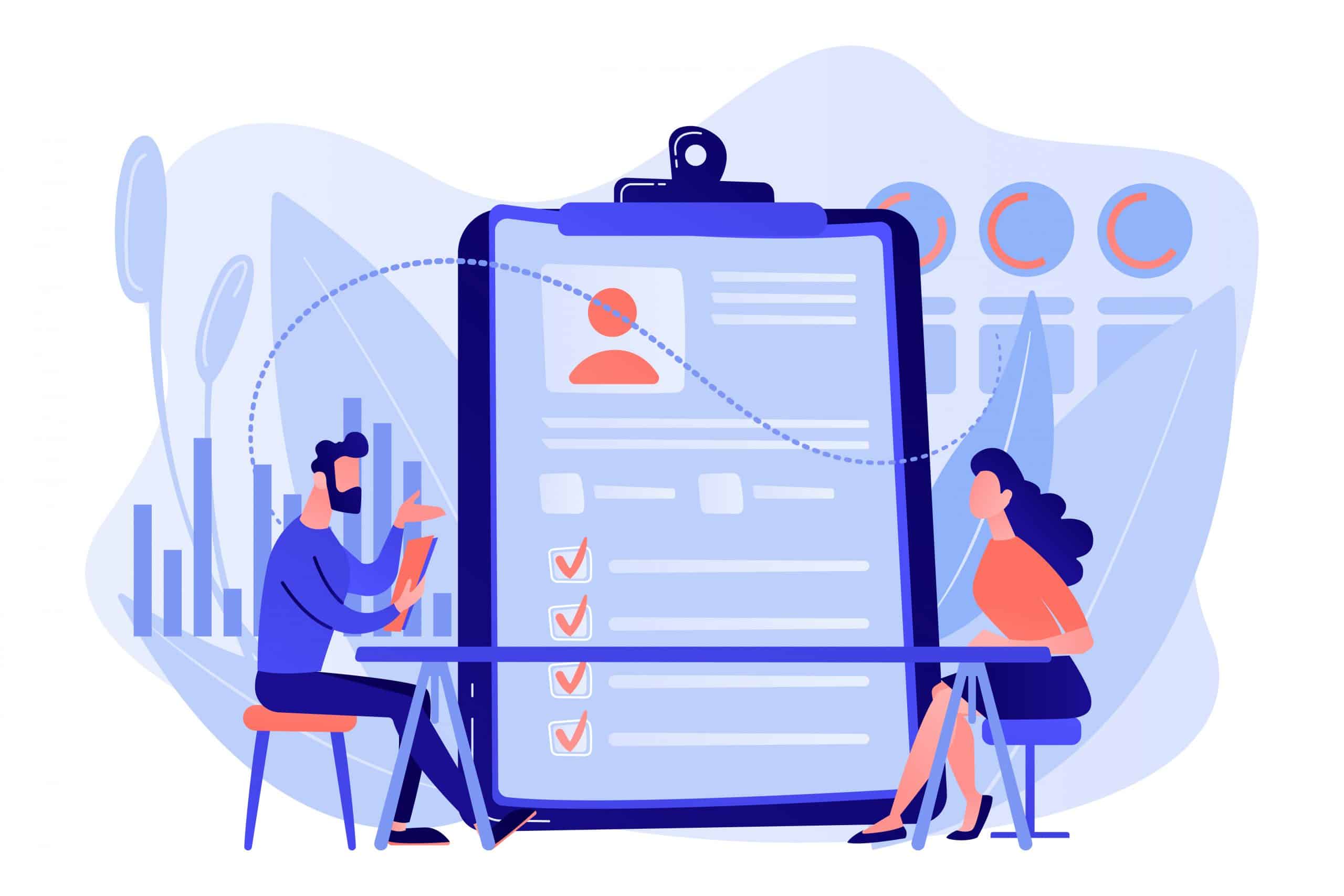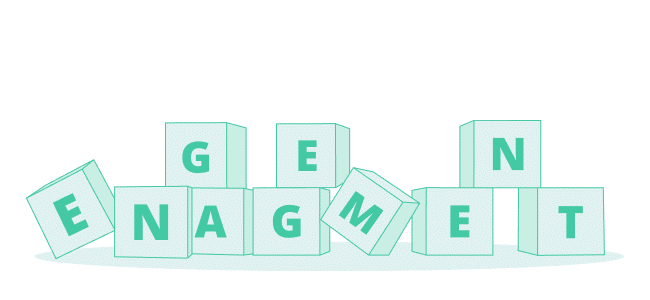‘The Great Resignation’ is upon us – and more than 40% of all employees are currently considering quitting their jobs. Even if they don’t have a new one in sight. These are tough times for companies. Because a turnover costs a lot on any financial bottom line. So, what can you do?
Employee Development Interview – part of the great engagement work
The employee development interview is your planned and close conversation with your employees. According to Krifa, 85% of Danish companies hold annual employee development interviews. And it’s a good idea, as these conversations are an important part of the big, essential well-being work. Well-being and daily job satisfaction can change relatively quickly for the individual employee – Therefore hold the interview at least once a year to be sure that you keep up to date with the individual’s well-being, expectations and job satisfaction. Employee development interview is an important tool in the whole great well-being work. It cannot stand alone, because of course you also have to run workplace assessment and engagement surveys on an ongoing basis, but the employee development interview is definitely a crucial part.
Good advice – prepare well before the employee development interview
First of all, at Woba.io we always recommend that at least one employee development be held per employee per year. Plan the interview well in advance – so that both you and your employee have a chance to prepare thoroughly. You can only give your employee these prerequisites by being clear about the framework for the interview. What are the expectations, what is the background and what is the purpose. Make sure you are clear about these premises to the employee, so that he/she has a real chance to prepare as best as possible.
Fixed or more free?
Some companies choose to run employee development interview according to a traditional and fixed schedule – and here it makes very good sense to have a specific employee development interview schedule that can be handed out to the individual employee beforehand, so that he/she can form a clear picture of what what must happen for the interview and how best to prepare. But others choose the more free approach, where the conversation is allowed to run more on its own and you haven’t really decided in advance which direction it should go.
There are advantages and disadvantages to both strategies – and it may make sense for you to make a qualitative assessment of what will be best for your specific company and your employees – and from there make a plan for how you will execute on MUS. Ask yourself the following questions before the interview:
- What were you talking about last time?
- What would YOU like to tackle this time?
- What is the end goal of the conversation?
Both you and your employee must get something out of this conversation. It should not feel like a waste of time for either of you, but on the contrary, give both parties a sense of concrete value and a sincere insight into the individual employee’s well-being and further development. To ensure that the conversation leads to what you both want, a plan for the process is essential. A template for the process that is quite operational and efficient is the following:
- Summons
- Preparation
- The employee development interview
- Report and follow-up
- Ongoing conversations/execution of specific plan
With this roadmap, it is particularly emphasized that the conversation should be taken seriously by both parties and that there is an overall plan for the entire process. Preparation and follow-up are two parameters which, to that extent, make the conversation more than just an ordinary conversation.
When the employee development interview is getting closer – Yes, it can be difficult to talk about personal well-being!
It can be extraordinarily difficult to talk about personal well-being when you are sitting and looking your manager in the eye. Here, your most important task as a manager is to create a safe and trusting space, where the employee must feel confident in being 100% honest – and not face any kind of condemnation. It is often necessary to give impetus to the conversation with a definite question frame. And to ensure the conversation’s topicality and relevance in relation to well-being and job satisfaction, the questions should move within the following seven factors; Opinion, colleagues, results, coping, balance, management and co-determination.
Meaningfulness
Which tasks are most meaningful to you?
Which are the least?
What do you need to experience more meaning in your daily work?
Colleagues
How are you with your colleagues?
How are you yourself as a colleague?
Do you have a best friend at work?
Results
What achievements are you most proud of?
What results do you want to achieve in the future?
What is the easiest way to achieve them?
Coping
Which tasks are you most comfortable with?
Which ones are you best at?
Which ones do you feel least competent in?
What will it take for you to dress better for them?
Balance
Is there a balance between your work tasks and the resources you have access to?
Do you experience a good balance between work and private life?
What is needed to create a better balance?
Management
When does your manager lead you best?
Is your manager clear during your working day?
Is there something you miss from your manager?
Can you describe the relationship with your manager?
Participation
Do you feel involved in your daily tasks?
In which areas would you like to have a say?
In which areas would you like to have even more say?
If you are touching these seven subjects, then you will come a long way. There should be a real possibility that you have been around the most important things for the employee – and that he/she has been heard and has had his/her wishes for development voiced out loud.
Note everything during the conversation – without losing presence.
And when the conversation draws to a close, go through what you have agreed on as concrete steps in the future development, so that you ensure alignment and execution of the employee’s personal wishes for development. Make a specific plan for the further development and set dates for the individual steps.
Learn about all the benefits of using Woba’s Employee Development Growth Solution >> LEARN MORE <<
Good advice – Employee development interview is over. What now?
The employee development interview is done. And both you and your employee should now have a good feeling in your stomach. A feeling that you have come closer to each other, understand each other and both take the upcoming development plan seriously. Right now it is incredibly important that you act on the results of the conversation immediately. You should now be sitting with a pile of good notes and a detailed, specific plan in front of you. Use them to create a clear overview – and write in the development plan what you expect to be achieved before the next employee development interview (which will probably be available in a year’s time). Write all agreements in the calendar and make sure to assign responsibility for the individual goal to the right person, so that you ensure that all agreements are met – within the agreed deadline.
From here it is ‘simply’ to follow the development plan and ensure that the employee’s wishes and goals are met and that the company does its part to ensure that the plan is followed and adhered to along the way.
Employee Development Interview is important, but daily dialogue is essential
Employee development interviews are a really useful and important tool in employee engagement. But something that is even more important is the daily friendliness and dialogue between management and employees. It is always important to look inward for a while and assess whether you, as a manager, have created this safe space, on which an open and present dialogue depends? It goes without saying that with an annual interview, situations and wishes will arise along the way which are important for the employee to say out loud and put into action if he/she is to feel seen and recognized.
Therefore, ask your employee to dance.
This means that you should create a safe space and confidentiality that makes your employee always feel safe to seek you out and ask you to listen to various issues or wishes for development. Show initiative and make it clear that you are always available for a present talk – whether it is a more serious one of this kind or just a much-needed ‘Walk&Talk’ on a gray Tuesday.











